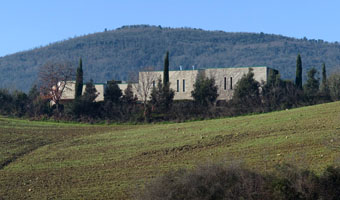Responsible farming
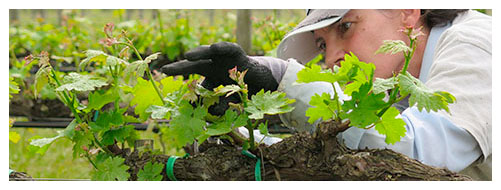
We work about 28 hectares of vineyard, split into four contiguous parts and with excellent south-easterly and south-westerly exposure, at an average altitude of 145m above sea level, with just 15km between us and the sea. The soil has a complex, stony structure on a clay substrate, which guarantees good drainage, maintaining freshness and humidity deep down. Monteti hill defends the vineyards from the winds that blow in from the Mediterranean, creating an ideal microclimate thanks to which the vines can benefit, protected, from the sea proximity.
Cabernet Sauvignon, Petit Verdot, Cabernet Franc, Alicante-Bouschet and Merlot alternate in the vineyard, which is divided into 28 plots, a bit like a chessboard. We have a density of 6,600 vines per hectare. The spurred cordon training system is used. We devote particular care to maintaining a balanced relationship between leaf surface and bunches.

We work with the utmost respect for nature and the environment. We apply responsible farming techniques, with organic fertilisation in winter, and have a weather station which, with its sensors for detecting the temperature and humidity of leaves and soil, helps us reduce treatments to the absolute minimum.
Selection and spontaneous fermentation
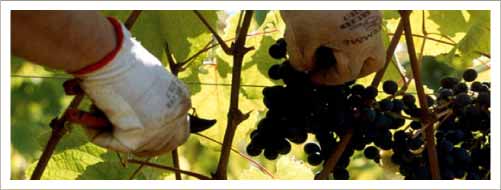
All of the grapes are hand-picked and very strict selection is the key to our quality. The grapes selected in the vineyard undergo further selection on the roof of the cellar, both before and after entry into the de-stemming machine. The grapes slide down through steel tubes exploiting the force of gravity, from the roof of the cellar to the fermentation tanks below. Delicate pigeage operations are carried out every 6/8 hours to extract the maximum from the skins.
Since 2007, the grapes ferment spontaneously thanks to the indigenous yeasts present on the berries and in the air, without the need to add non-native yeasts. The vegetation terraces that surround the cellar contribute to enriching the air with good natural yeasts. The results, which are significant in terms of aromatic complexity, offer further confirmation of the link between our wines and their territory.
The vine’s plots
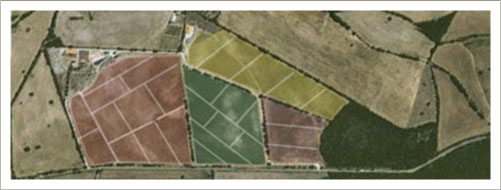
We process the grape plots separately. The cellar has been conceived and designed for this. We harvest one plot (about one hectare) of vineyard a day and the product undergoes a separate vinification in a dedicated vat and is kept classified separately also while maturing in wood or steel, up to the moment when the wine is blended. The importance of working by plots is that it allows us to have for each vintage different types, for example, of Petit Verdot or Cabernet Sauvignon, depending on the original vineyard plot, like sub-crus. This gives us an extraordinary range of possibilities when the time comes to make up the two wines. More than an estate of 28 hectares, we like to describe it as an estate that is 28 times one hectare.
Low use of sulphites
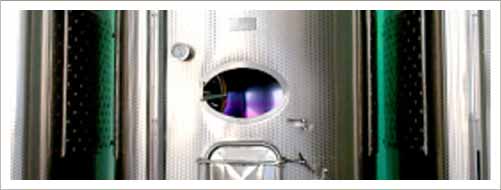
We are able to reduce the use of sulphites thanks to prolonged wine contact on the lees, which are already rich in natural antioxidants, and with constant oxygen exposure control in the barrique. This was initially an experiment and has now become consolidated practice.
Maturing and ageing
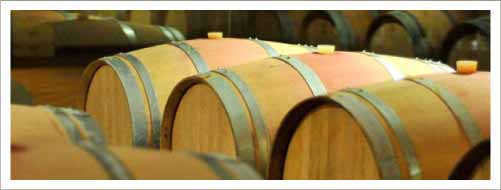
We use the force of gravity throughout the entire production process, from dropping the grapes into the fermentation tanks to the descent of the wine into the barriques. This enables us to avoid pumping operations which are stressful for both the grapes and the wine. We are very prudent with regard to the use of wood. We use only barriques made with French oak obtained from different forests and with different levels of toasting, chosen from the best suitable for our products. The use of new barriques complies with the criteria and limits established for each of the wines. After maturing separately for a year in new or second-use barriques, or in steel, the wine is blended, producing Caburnio and Monteti. Monteti returns to the barriques for a further 6/8 months. Caburnio is bottled.
The subsequent bottle-ageing period is fundamental. Monteti spends at least two years, and Caburnio one, resting in the dark at controlled temperature, before being released for sale. This guarantees perfect softening of the tannins after a long period of maturing in wood, bringing out the natural characteristics of the respective blends.


